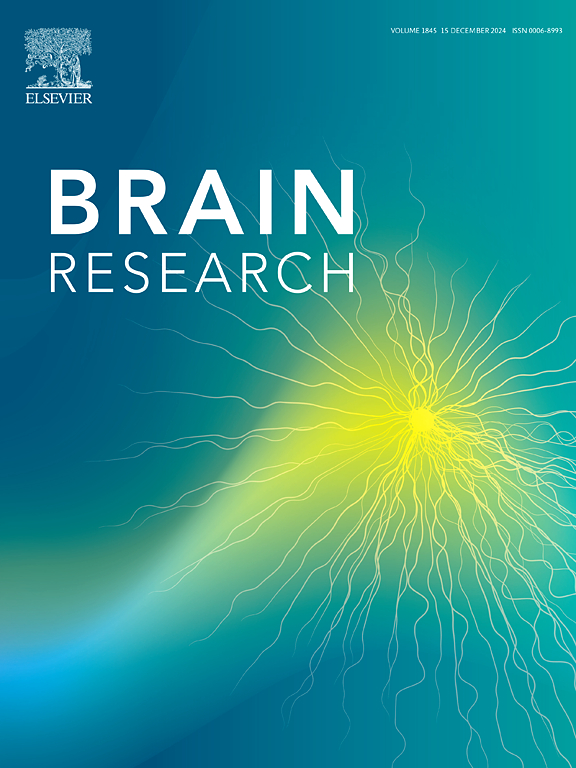Ferroptosis and its contribution to cognitive impairment in Alzheimer’s disease: mechanisms and therapeutic potential
IF 2.6
4区 医学
Q3 NEUROSCIENCES
引用次数: 0
Abstract
Alzheimer’s disease (AD) is a progressive neurodegenerative disorder featuring cognitive impairment with loss of memory, with implications of Amyloid-β plaques and hyperphosphorylated tau tangles. Recent studies suggest that ferroptosis, an iron-dependent form of cell death characterized by the accumulation of lipid peroxides, may play a key role in the molecular and cellular pathways underlying neurodegeneration in AD. Dysregulation of iron stability is correlated to oxidative pressure and neuronal damage, especially within the hippocampus and cortex region, promoting a vicious cycle of neurodegeneration. This review focuses on summarizing major recent findings on ferroptosis towards cognitive impairment in AD involving major regulatory genes such as HIF1α and GPX4, in neuroprotection or as a risk factor of the disease. The predictive power of gene expression models based on autopsies and blood samples further highlights the importance of ferroptosis-related pathways, such as autophagy, which influences iron homeostasis and lipid degradation, and mTOR signaling, which regulates oxidative stress responses and cell survival, in shaping AD pathology and progression. Moreover, the review sheds light on novel therapeutic strategies targeting ferroptosis, such as ferroptosis inhibitors, iron chelation, and several antioxidant therapies, which hold promise for alleviating cognitive deficits and advance treatment paradigms in AD. Investigating the role of ferroptosis in AD may uncover new therapeutic strategies that target the interconnected processes of cognitive decline and neurodegeneration.

铁下垂及其对阿尔茨海默病认知障碍的贡献:机制和治疗潜力
阿尔茨海默病(AD)是一种进行性神经退行性疾病,以认知障碍和记忆丧失为特征,与淀粉样蛋白-β斑块和过度磷酸化的tau缠结有关。最近的研究表明,铁死亡是一种以脂质过氧化物积累为特征的铁依赖性细胞死亡形式,可能在阿尔茨海默病神经退行性变的分子和细胞途径中发挥关键作用。铁稳定性失调与氧化压力和神经元损伤有关,特别是在海马和皮层区域,促进神经退行性变的恶性循环。本文主要综述了近年来有关铁中毒对阿尔茨海默病认知功能损害的研究进展,包括HIF1α和GPX4等主要调控基因在神经保护或作为阿尔茨海默病危险因素中的作用。基于尸体解剖和血液样本的基因表达模型的预测能力进一步强调了铁中毒相关途径的重要性,如影响铁稳态和脂质降解的自噬,以及调节氧化应激反应和细胞存活的mTOR信号传导,在塑造AD病理和进展中的重要性。此外,该综述还揭示了针对铁下垂的新治疗策略,如铁下垂抑制剂、铁螯合和几种抗氧化疗法,这些疗法有望缓解AD的认知缺陷和推进治疗范式。研究铁下垂在AD中的作用可能会发现新的治疗策略,目标是认知能力下降和神经退行性变的相互关联过程。
本文章由计算机程序翻译,如有差异,请以英文原文为准。
求助全文
约1分钟内获得全文
求助全文
来源期刊

Brain Research
医学-神经科学
CiteScore
5.90
自引率
3.40%
发文量
268
审稿时长
47 days
期刊介绍:
An international multidisciplinary journal devoted to fundamental research in the brain sciences.
Brain Research publishes papers reporting interdisciplinary investigations of nervous system structure and function that are of general interest to the international community of neuroscientists. As is evident from the journals name, its scope is broad, ranging from cellular and molecular studies through systems neuroscience, cognition and disease. Invited reviews are also published; suggestions for and inquiries about potential reviews are welcomed.
With the appearance of the final issue of the 2011 subscription, Vol. 67/1-2 (24 June 2011), Brain Research Reviews has ceased publication as a distinct journal separate from Brain Research. Review articles accepted for Brain Research are now published in that journal.
 求助内容:
求助内容: 应助结果提醒方式:
应助结果提醒方式:


